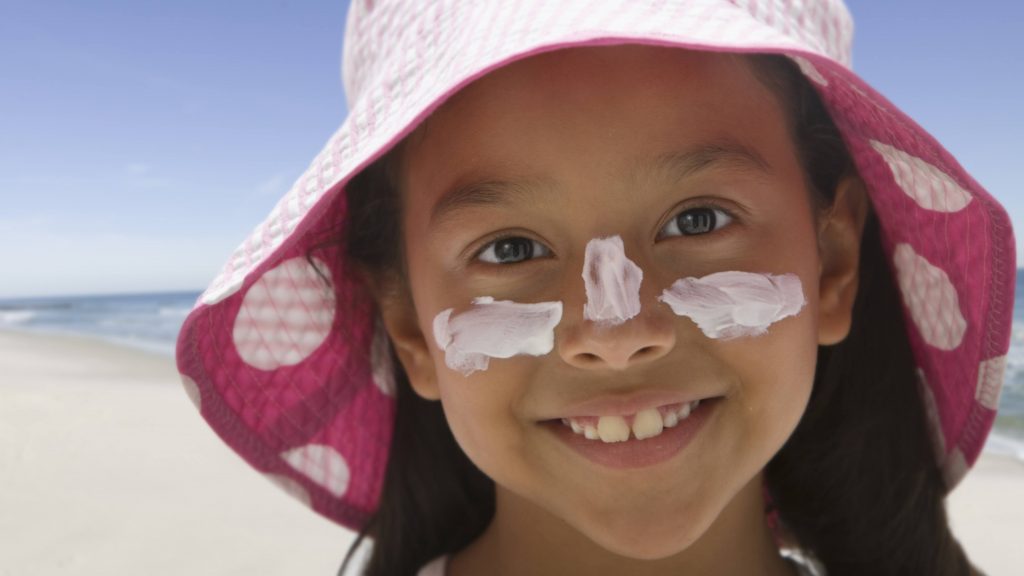
DEAR MAYO CLINIC: What are the best kinds of sunscreen to use on my kids? Do spray sunscreens work as well as lotions? Also, does UPF clothing offer more sun protection than a standard long-sleeved shirt?
ANSWER: Sunscreen can and should be safely used for children 6 months and older. You may see that some sunscreens are specifically labeled for babies or kids. However, children can use the same sunscreen as adults. The most important factor about sunscreen at any age is that you use a broad-spectrum sunscreen with a sun protection factor, or SPF, of at least 30.
When reading labels, look for sunscreen labeled with the words "broad-spectrum." This means the sunscreen will protect against both types of ultraviolet, or UV, rays: UVA and UVB. UVA is the wavelength of light that can penetrate to the deep layers of skin and lead to skin damage over time. UVB is the wavelength of light that penetrates the skin more superficially and causes sunburn.
SPF is the measure of how well a sunscreen blocks UVB rays. Currently, most dermatologists recommend you have a sunscreen with an SPF of at least 30 or higher. SPF relates to how long it will take the sun's UV rays to burn your skin. Experts agree that an SPF factor of 30 is the minimum needed to prevent skin damage from UVB.
The other key to effective sunscreen use is ensuring the correct application and amount. Most people aren't using as much sunscreen as they should. At least two tablespoons of sunscreen, or 1 ounce, should be used to cover all surfaces of the skin, except the eyelids.
It is also important to reapply sunscreen at least every two hours, or any time after sweating or swimming. Although some sunscreens may be listed as water-resistant, none is truly waterproof.
If used correctly, sunscreen in a spray can be as effective as sunscreen in a lotion. Making sure the spray nozzle is no more than 1 inch from the skin will help ensure the sunscreen directly contacts and coats the skin. However, lotion can be more reliable because you can see and feel where it goes. For that reason, I often recommend using a sunscreen lotion most of the time and reserving the spray for hard-to-reach areas or quick reapplications.
It is also important to use sunscreen any time you're outside, even if the sun isn't shining. UV light penetrates through the clouds, so sun damage can occur even on a cloudy day. Sun also reflects off water, snow and other surfaces, so sunscreen should be a year-round routine. When reflected, the rays become even stronger, so be sure to apply sunscreen when outdoors, even in cold weather, such as while skiing.
UV protection factor, or UPF, clothing can be a helpful addition to sunscreen and offer greater protection than standard long-sleeved clothing. When looking for UPF clothing, search for items that are labeled "UPF 30" or higher, with "UPF 50" or more offering optimal protection.
Other important practices include avoiding direct sun exposure between 10 a.m. and 2 p.m., when the sun's rays are strongest. Regardless of the time of day, seek shady areas to further shield the skin from sun, and be sure to bring additional items for sun protection, such as an umbrella; a wide-brimmed hat that covers the ears, neck and face; and sunglasses.
By incorporating all these practices, you can ensure that you and your family have a safe and fun experience outdoors. — Dr. Ashley Wentworth, Dermatology, Mayo Clinic, Jacksonville, Florida
****************************
Related Articles
- Consumer Health: The importance of sunscreen, sunglasses and protective clothing for adults and children published 7/1/21
- Consumer Health: Understand sunscreen options published 6/10/20
- Consumer Health: Check your sunscreen’s expiration date published 8/9/19







